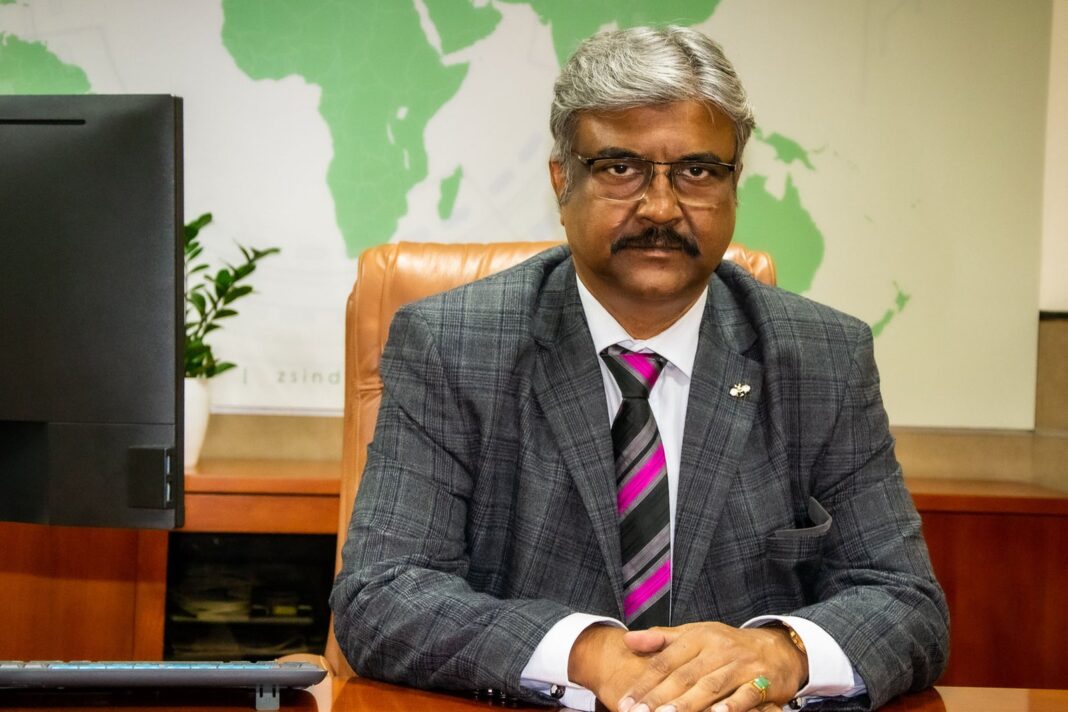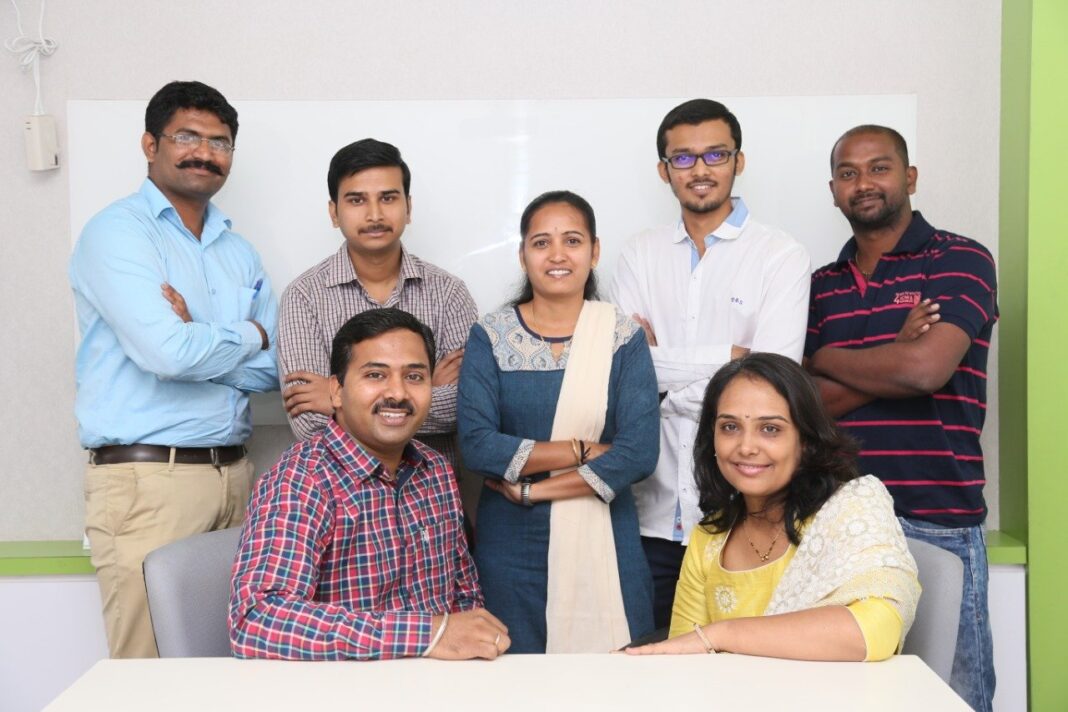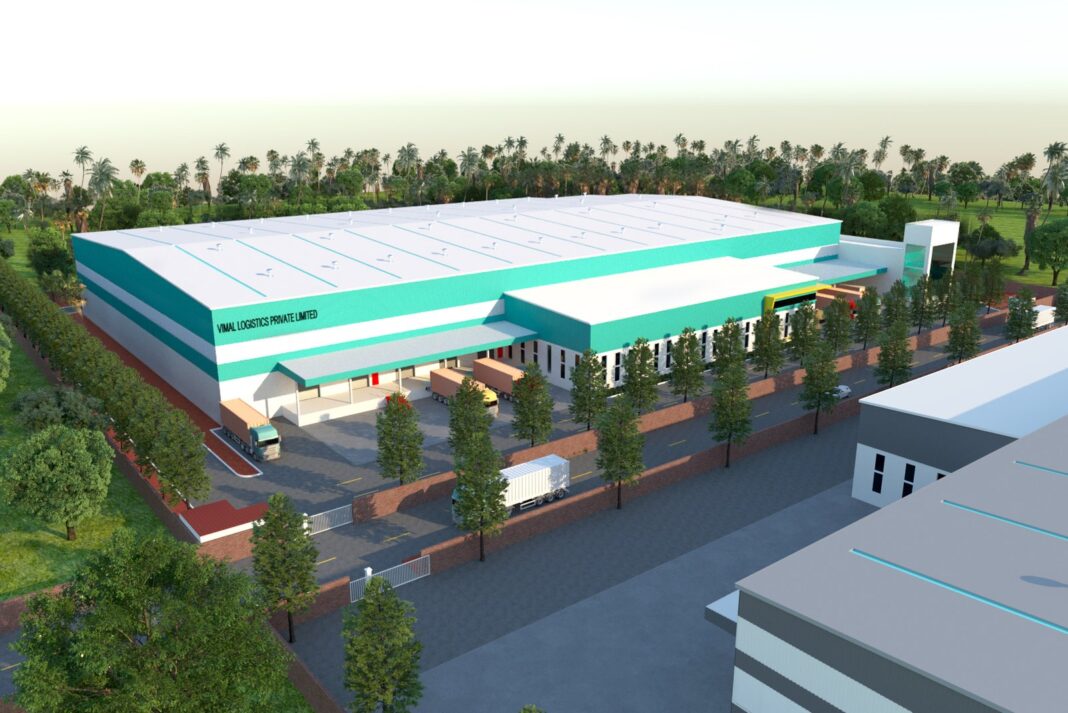A leader in the fabrication industry who has grown up gradually and today has become a game changer and the reason is innovation and the ability to take risk. They are none other than Zamil Steel Buildings who have pioneered every industry they have stepped in…
The soulful mind who has been the catalyst of this pioneering journey…
Alakesh Roy, Managing Director, Zamil Steel Buildings India Pvt Ltd is here with us today…
Read on to know more…
Q. In this journey of being the premium pre-engineered building company of the country. How would you describe the same?
A. Zamil started its journey in the Middle East in the year 1977. So, the journey has been good in Saudi Arabia, Middle East and in Africa. In 1997 we ventured into Asia where we started the first factory in Hanoi and then in Ho Chi Minh City in Vietnam. In 2007 we entered into India and the story and path was a bit different here. Initially we had a problem with growth, and it was a difficult start in India because we had set up a big plant and the demand had suddenly dropped. The first two-three years in India was not that great for Zamil. subsequently, the last 5 years, including these Covid years, we have been able to grow in a rate of 35-36 per cent CAGR which is beyond the growth of the market segment growth and is the best 10-12 per cent. Normally the market growth is at an average of 8 per cent. Also, if you look at the benchmark analysis, we were not even in the top three 5-6 years back, whereas now we rank second. Before, we were of 20 percent in terms of volume of the leader as compared to our current which is 60 per cent. It is not like the industry has not grown, it has definitely grown, and other players have also come in, but we have been able to grow faster than the market itself.
As a company, we have not limited ourselves to the standard PEB nomenclature. Over time, we have ventured into all kinds of steel structures, be it hot rolled,plates, or tubes you name itand we have it. We have a single integrated plant that can handle everything. This has given us a tremendous leverage in terms of placing ourselves in a leadership position at the very concept stage. So, any new concept that is coming up or any new segment that is opening, we are there; be it warehousing or the EV segment. We have bagged the largest EV contract in the recent times including the large-scale contracts. We are alsoleading the warehousing sector with almost 70 per cent of the market share. So, this new segment identification and focus has given us a lot of mileage in the market.
Q. Having a Global presence in the steel construction industry, what is your take on the steel construction in India vis-à-vis overseas?
A. The Indian consumption storyis purely domestic driven which is both good and bad. To compare, as I am also taking care of the Vietnam unit and from there, we have processesin Ten countries outside Vietnam. In Vietnam, 65 per cent of the volume comes from exportnot only in the Asian countries but also in South America, North America, Australia, and Europe. In India, we are too much dependent on the domestic growth based on various factors such as import policyas there is duty on the import to the point that export incentives are curtailed. So,export is not a focus for the Indian steel industry or the government as of now for the steel structures. While most of the developed countries do not do any kind of fabrication, instead, they import it. So, here, we have lost out.
On the flip side, India as a country has grown and the infrastructure is developing opening huge market for every player present in India.My take on the Indian scenario is that, if we are not able to export, the long-term sustainabilitygrowth model is unsustainable.
While you compare Africa, there are so many countries that are developing on their own- from the East Coast to the West or the North to the South of South Africa; there is a huge scope in Africa. My take on our presence in Africa is that we are missing out on the opportunities that the Eastern part of Africa presents and that is where the Indian industry can do ready business because of the port and long coastline and the proximity of place. According to me Kenya, Mozambique, Tanzania, and South Africa should be a business potential for us. We are getting inquiries, but the increased cost and rates are putting us in a deterrent mode.
Q. In the situation like pandemic Zamil has successfully completed some milestone projects. Could you please share your experience on the same?
A. Speaking about milestone projects Warehousing is one such segment, which were usually built in a small box structure, but the concept of integrated warehouse has arrived and Zamil has led that journey.Any mega warehouse facility is 300X400 meters or 500X400 meters.They are huge, bigger than the Mumbai or Delhi Airports. The entire industry has gone through a change; with multi-level automated racking systems in place, the concept of instant delivery has givengrowth in the industry, and, we have been a part of it. We have been able to undertake large span structures and having our standing seam profile, which is in zero leak profile. These kinds of developments were done by us to move ahead in the industry.
Moving on to other structures, we have done high rises, converted horizontal factories into vertical factories which has been a key landmark in the industry and people are talking about it. Hence, with the buildings growing taller, one can have their manufacturing unit at multiple levels which is not limited to a certain kind of industry now every industry is going for it.
Q. Zamil has also benchmarked the supply Chain practices. What is your take on the future of Indian Supply Chain and Logistics Industry?
A. The supply-chain industry has also evolved over a period of time because it is no longer dependent on factories rather it is dependent on warehousing. This is true for lighter commodities but for steel, the real challenge is that whatever supply-chain you have got to stop here and the goods freely moving.
To overcome this challenge Zamil has gone into partnership with major steel mills and have created a yard for storing steel. For example, we have got a yard by Tata Steel in Khalapur for distribution, until and unless we do that, it is not possible for steel to start from the plants in Jamshedpur or Kalinga Nagar and reach us. Across the nation and industry, distribution has become better, and companies are putting forward their own steel in the distribution setup which is helping us. Earlier this was done by traders but now companies are doing it directly. Tata Steel also has a distribution and processing plant in Ranjangaon, MIDC which is helping not only us but also helping the auto industry, fabrication industry, traders and everyone involved in our industry.
Q. What are the recent problems being encountered by the Indian Steel Fabrication Industry? How do you think we can overcome it?
A. The main challenge today is increased steel prices. Today steel prices are double what it was in July last year. The main challenge is with this kind of project cost I do not think CAPEX is the viable option which will prove to be a big difference in the coming years.
Talking about COVID, in the first phase, people were scared but optimistic, whereas in the second phase people are scared and pessimistic. I have little idea when this second phase would end and whether there will be a third wave. The indicators are challenging at the same time we cannot shut the entire society. We have to move ahead.
If you look at the offices/ industries, they are much safer places than many homes. If you look at Mumbai, Pune or any other city & for that matter they are very high congested cities & societies. The chances of the spread of disease are very high in these societies rather than the offices/industries. Until you have the right sense, lockdown will not help people, nor the economy. Why lock the entire city, rather we should safeguard those who are infected. Previously we were talking of mask, sanitizers, and ventilators and now we are speaking of Oxygen. The problem is not of today but from before where hospitals could be set up without Oxygen concentrators and Plants. There are huge ramifications to all this. So, the fear of the unknown has set in.
Q. Which is your key customer-focused segments? How different is Zamil from its competitors?
A. As an industry, we always focus on the areas of growth. As I have mentioned earlier, CAPEX is the first thing to stop and last thing to start. So, we are now focusing on closing all our existing projects and finishing the new projects on time or before time. The biggest focus today is how to keep our employees healthy and taking care of those affected with COVID. As an industry we will be providing vaccination facilities to each of our employees so that they have a sense of security and safety.
As for what makes Zamil different from its competitors, we are withstanding this time of pandemic together and have not sacked even one person neither last year nor this year. We believe in our team, and we believe in pulling through this tough times together. We are moving along and are hopeful that the future is better than what it is today. We are moving in the right direction, but God has His own ways of testing us and we will fight this together.
Q. What strategy should be adopted to promote structural steel construction in India?
A. First of all, the price of steel should come down; there should be some regulation in the price of steel. Today people have understood the virtues of steel. Only point of concern is when viability is put as a question mark and then it becomes a real issue. A good point that even Hon. Minister Mr. Nitin Gadkari has said is that the time has come to find an alternative to steel. This is what will give growth to the construction and the fabrication industry and take it to the next level.
For example, automobiles, if steel were still used to make them then prices would have gone up ten times today. Instead, the use of plastic, aluminum and alternative materials have reduced the weight of the vehicles along with the use of synthetic materials in the production of cars which will help the industry grow further.
Today, the consumption and content of steel in automobiles is very less; it is only 35-36 percent in value. We as an industry should also think of alternative materials for construction, it will help the industry to grow more. Overdependence, on steel has to end and some other material should be used widely otherwise infrastructure cost will keep going up if we are solely dependent on steel.
Q. What are your future plans?
A. We want to grow in India. Our principles are very optimistic. In the last two years, no other steel fabrication company has added to the capacity and capability while we have achieved that. One of our latest additions is the installation of a beam drilling line from Germany.
We do not have any backend order for that, but we want to highlight this and use it as USP to serve our customers with regards to design and detailing. Another, milestone we have achieved specifically in the last two years is, we have gone completely digital; there is not a single movement in paper within the organization. We are migrating from Oracle I12 to Fusion and as for designing, we are 100 per cent software based rather than being manual based.
Now Tekla is the ‘in’ thing. Before, up until recently during the pandemic, people could not share their modeling because the software they used was different but today the integration has been done to the extent that even the screens can be shared. These are the real positives that we have got out of this Covid scenario in the last two years. Our employees no longer need to ask for the data, instead, they can simply fetch it themselves from the cloud. Digitization is a big boost to the way we function. There are no hard copies anywhere; even the material receipts and complaint tracking etc. are digital via mobile phones.
Q. What message would you like to give to our readers?
A. My message to the readers is, be optimistic not to be fearful. Many of us have lost the game mentally rather than physically in the last two years. The world will be better place for sure so let us gear up for the new age. Technology may not last, but we shall last, humanity will last. We will have to evolve ourselves to the new requirements of life.






